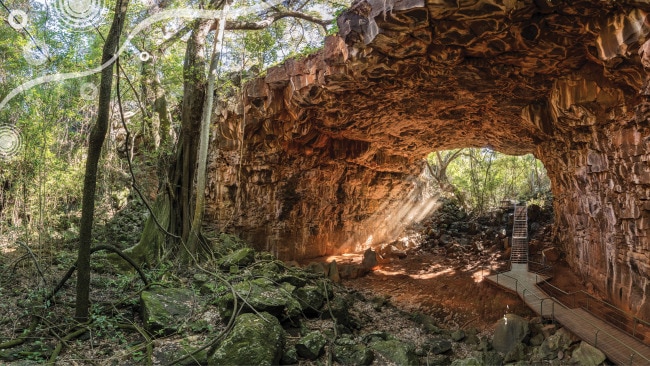New versus established homes - when is one better than the other?
Deciding whether to buy a big two-storey home in the burbs, or a run-down shack in the inner city can be tough, so how do you know what is right for you? Let's find out.

Deciding whether to buy a big two-storey home in the burbs, or a run-down shack in the inner city can be tough, so how do you know what is right for you? Let's find out.
YOU can’t beat the smell of a brand new home, complete with all the latest appliances and a big backyard. Or can you? How about a fixer-upper property in the heart of the CBD?
The new versus established home debate is a heated one, and one that plagues the minds of property buyers looking to get into the market.
So when is buying a four-bedroom plus a pool property in the burbs a better decision than buying an established home in the inner-city, and vice versa?
According to the latest Suncorp Home Index Survey, Australian homeowners aren’t too fazed by the age of a home, but 80 per cent of respondents valued location, size and looks as the most important feature.
Only 54 per cent rated ‘how modern your home is’ as very important, while 32 per cent were neutral and 12 per cent rated it as not important at all.
In Queensland, many buyers value older homes with character more than modern dwellings, according to Suncorp Head of Customer Solutions Samantha Miller.
“There is a segment of the market who would only go new, but there is also a segment that values old,” she says.
“Our customer research shows many people have a passion for the old Queenslander homes.”
Director of property valuer and advisory service, Herron Todd White, Gavin Hulcombe adds that these older homes are also attractive due to their location.
“Ultimately people are concerned about position and proximity to the CBD and public transport,” he says.
“Position is often the driving factor that will override the style of the property, and the way the city is developed generally means that the older houses – the pre-1900s homes - are nearest to the city, with the post-war (1945 to 46) homes in the next ring.
“The supply of modern homes within five kilometres of the city is reasonably constrained compared to old character homes, (and) they can be reasonably expensive as it’s a new home in a premium location.”
Data shows there are fewer new homes being built in line with the cooling property market, with Australian Bureau of Statistics figures showing total dwelling approvals fell by six per cent in Queensland and 5.6 per cent nationally over the year to July 2018.
Those that want to be both close to the CBD and in a new home, especially first homebuyers, will likely have to compromise, according to Miller.
“That might be by looking at old versus new or changing the property type,” she says.
New apartments provide some of the best opportunities to buy modern homes close to the city in Brisbane, but if buyers are after space they’ll have to head out to the outer suburbs further from the city where there is plenty of land on which new houses are being built.”
Tony Coughran of Simply Gold Coast Property Advisors adds that on the Gold Coast new homes are also generally much further away from the coastal strip or lifestyle areas.
“They’re more isolated so you have to travel to things you love, such as coffee shops, beaches and recreational areas,” he says.
But as you move closer to the lifestyle location, you’re paying more for the land and getting less bricks and mortar for your money, he adds, so buyers have to compromise on the property type or size.
Coughran says the most important factor for buyers on the Gold Coast is lifestyle – or location.
“A lot of buyers are moving closer and closer to the coastline.
“When interviewing people we ask them about pets, kids, anchor points such as school and work, what they love about the Gold Coast and what they like to do, and for most a new house in a suburb like Pimpama is not going to suit.”
The option for buyers who want a new or modern home is to buy an older house in a lifestyle area and renovate, says Coughran.
“The original homes that have good bones are very popular, and you can move in and get a feel and then decide where to put your renovating budget,” he says. “Or if you don’t like the house you can knock it over and build a new one.”
While many buyers value older character homes due to the way they look and where they’re located, Coughran warns the ongoing maintenance costs are much more expensive than a modern home.
“It can be a big drawback and something to be aware of when buying older homes,” he says.
Miller says a building and pest inspection is essential for all buyers, especially those who don’t purchase a brand new property.
“When you get the building and pest report you must actually read it and take action if necessary before completing the purchase,” she says, adding that while lending is done on a case-by-case basis, a building and pest inspection can impact upon the property’s valuation, which can affect borrowing.
“When people are buying a home they’re in a rush to get in there, and they just want to tick everything off the list quickly, so sometimes the train can just keep rolling,” Miller says.
“The report will cost around $400 but it’s the best $400 you’ll spend when buying a house.”
Newly built homes are covered by home warranty insurance, lasting for six years and six months in Queensland.
In addition to lower maintenance, Hulcombe says the biggest advantage of choosing new is the ability to customise it if you build the home, but that’s a benefit you lose if you simply buy a brand new home.
Another benefit is that modern building techniques make for more efficient homes, such as being easier to keep cool, he says.
But Hulcombe warns that buyers need to be wary of paying even just a small premium for new properties, particularly for units, as when they sell it will no longer be brand new.
“Two or three months down the track it’s a second-hand house, so the newness doesn’t last for long,” he says.
“The reality is that when you go to sell it in six months or even five or 10 years, at the end of the day you’re still selling second-hand property.”
Originally published as New versus established homes - when is one better than the other?



